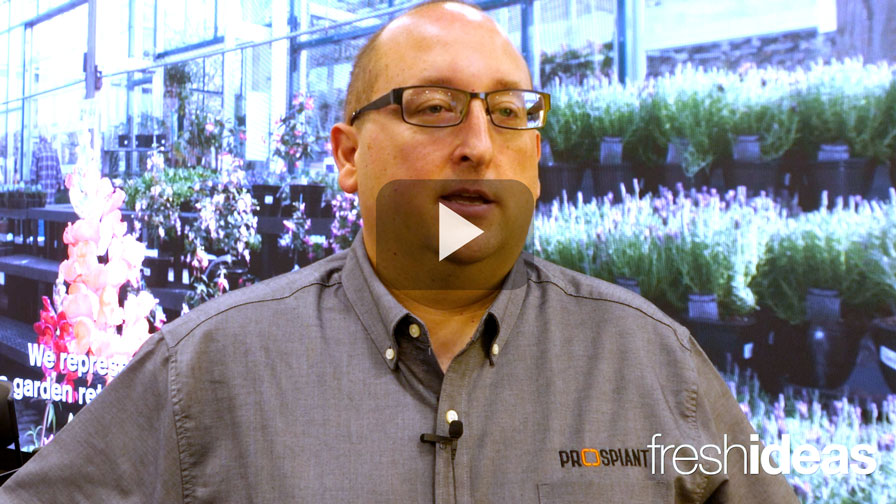Which Plants Do Retailers Change The Prices On Most?
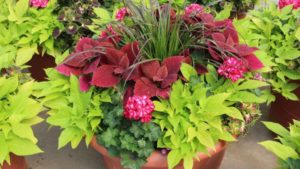 When our panel of experts (Dr. Charlie Hall, Texas A&M, Dr. Bridget Behe, Michigan State University, Consultants Steve Bailey, Ian Baldwin, and Sid Raisch) and I put together a pricing survey, we were curious about which plants retailers were most likely to change the price on. In other words, what’s most likely to be put on sale? Which categories are most likely to have increased prices due to the perceived value?
When our panel of experts (Dr. Charlie Hall, Texas A&M, Dr. Bridget Behe, Michigan State University, Consultants Steve Bailey, Ian Baldwin, and Sid Raisch) and I put together a pricing survey, we were curious about which plants retailers were most likely to change the price on. In other words, what’s most likely to be put on sale? Which categories are most likely to have increased prices due to the perceived value?
Value-Added Plants
Let’s start with value-added plants. Before the survey, most of us thought trendy plants, combo gardens, and large plants would be near the top of the list.
We were partially right. Big plants and container gardens are at the top. But succulents and mini plants weren’t even close to the top.
The four plant categories that are most likely to have perceived-value pricing applied are:
- Container Gardens
- Shrubs
- Large Perennials
- Trees
Not surprisingly, container gardens leads the pack. About 72% of retailers say they are mostly likely or somewhat likely to boost the price of combo gardens.
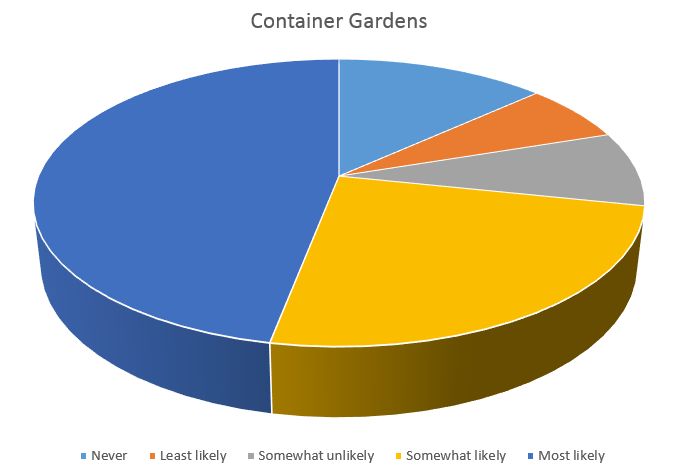
Shrubs aren’t far behind, with 66% of retailers answering “somewhat likely” or “most likely” when asked about which plants they give value pricing to. But as you can see, the proportions between the “most likely” and “somewhat likely” are strikingly different.

On Sale Plants
Now let’s turn our attention to the plant categories that are most likely to be placed on sale. Here are the top four:
- Small Annuals
- Vegetables
- Shrubs
- Small Perennials
When it comes to plants most likely to be put on sale, once again, the leading plant category is no surprise: small annuals. Like container gardens, those who say they are most likely and somewhat likely to put small annuals on sale are in the low 70% range.
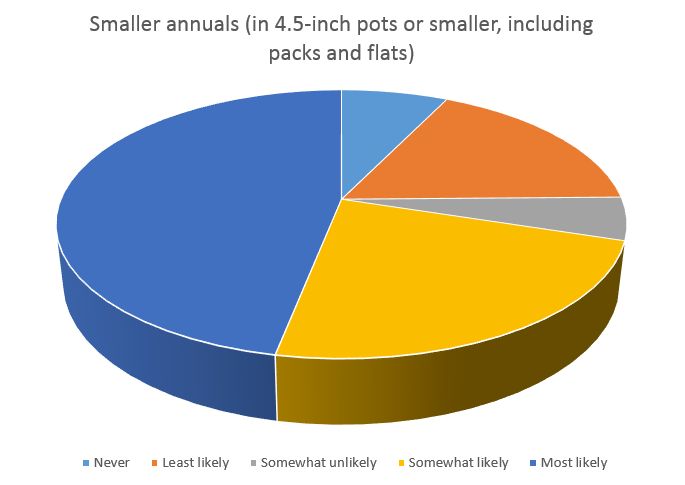
Vegetables, like small annuals, turn quickly and are highly perishable. However, they do differ somewhat in how plant retailers responded:
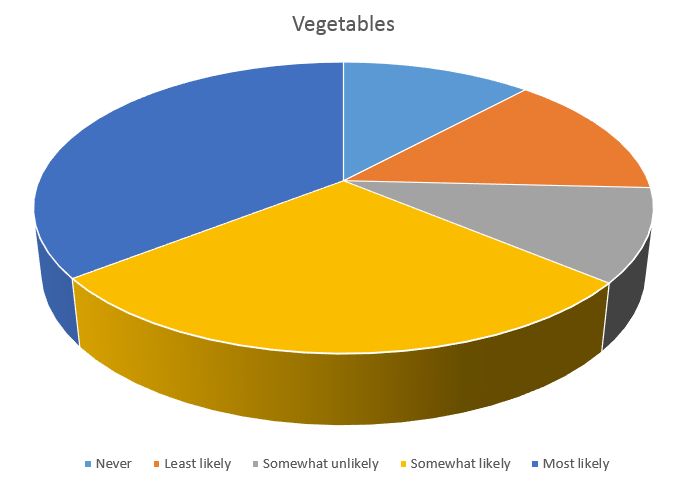
Shrubs And Trees Are Outliers
Generally speaking, the list of plants most likely to be put on sale is the mirror image of those most likely to be given value added pricing. Take a look at the responses side by side. Where annuals extend forward on the left (the sales chart), the bar retreats on the right (the value-added chart). Likewise, Where container gardens retreats on the left, it extends on the right.
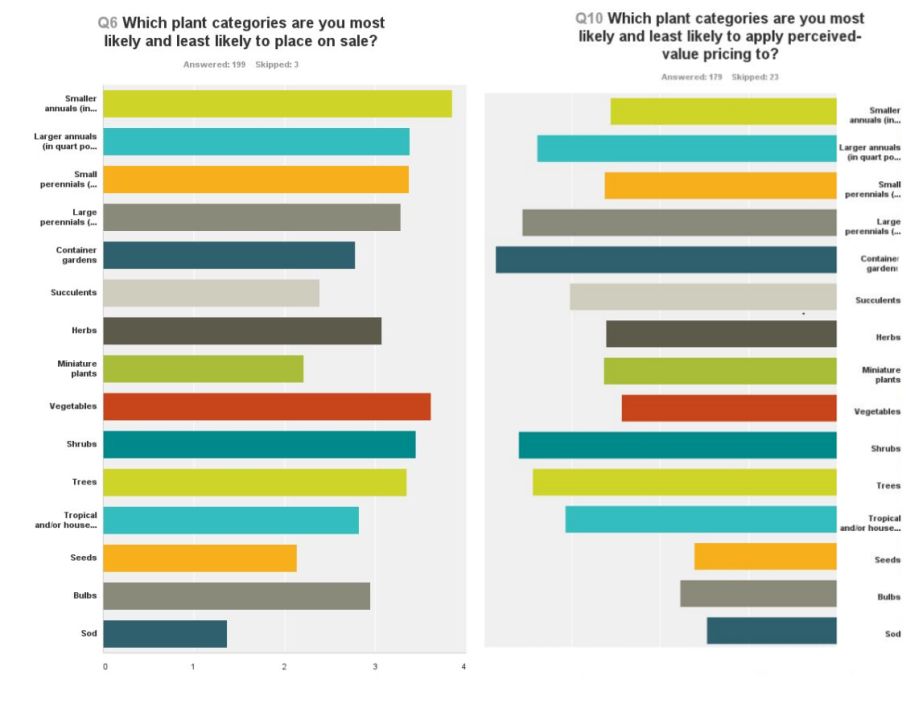
Two of the exceptions are trees and shrubs. These two categories performed strongly on both lists, with shrubs in particular being strong. If you recall, it came in second for as a value-added category, and third for most common plant to be put on sale.
What’s going on here? Typically, what makes a plant more likely to be put on sale (highly perishable and a short selling season) has little in common with what makes a category more likely to be added value (unique product, highly trendy, larger).
We took a look, and about 64% of retailers overlap with putting shrubs both on sale and added-value pricing. So the difference does not stem from two groups acting differently.
Let compare how likely retailers are to give value-added pricing to shrubs (right), compared to putting them on sale.
Value Added vs Placed On Sale
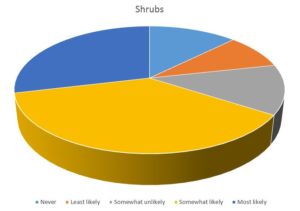
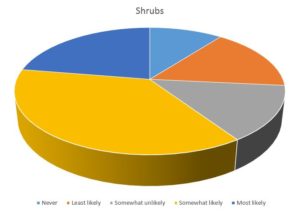
Retailers who were unlikely, somewhat unlikely, or would never put shrubs on sale made up a significant group of about 45% combined. And those who were likely or somewhat likely to give value-added pricing to shrubs amounted to about 65%.
A couple of likely scenarios comes to mind:
- Shrubs, as larger, more valued plants, are likely marked up due to their value. However, large plants can take up a lot of real estate, and so they are put on clearance at the end of the season.
- When shrubs and trees are placed on sale, retailers see a strong customer response. And so while most trees and shrubs have value added pricing, strategically selected varieties are placed on sale to help increase customer counts outside of spring.
We’d love to hear from those of you who both use value-added pricing and sales pricing on trees and shrubs. Why are you using this practice?






